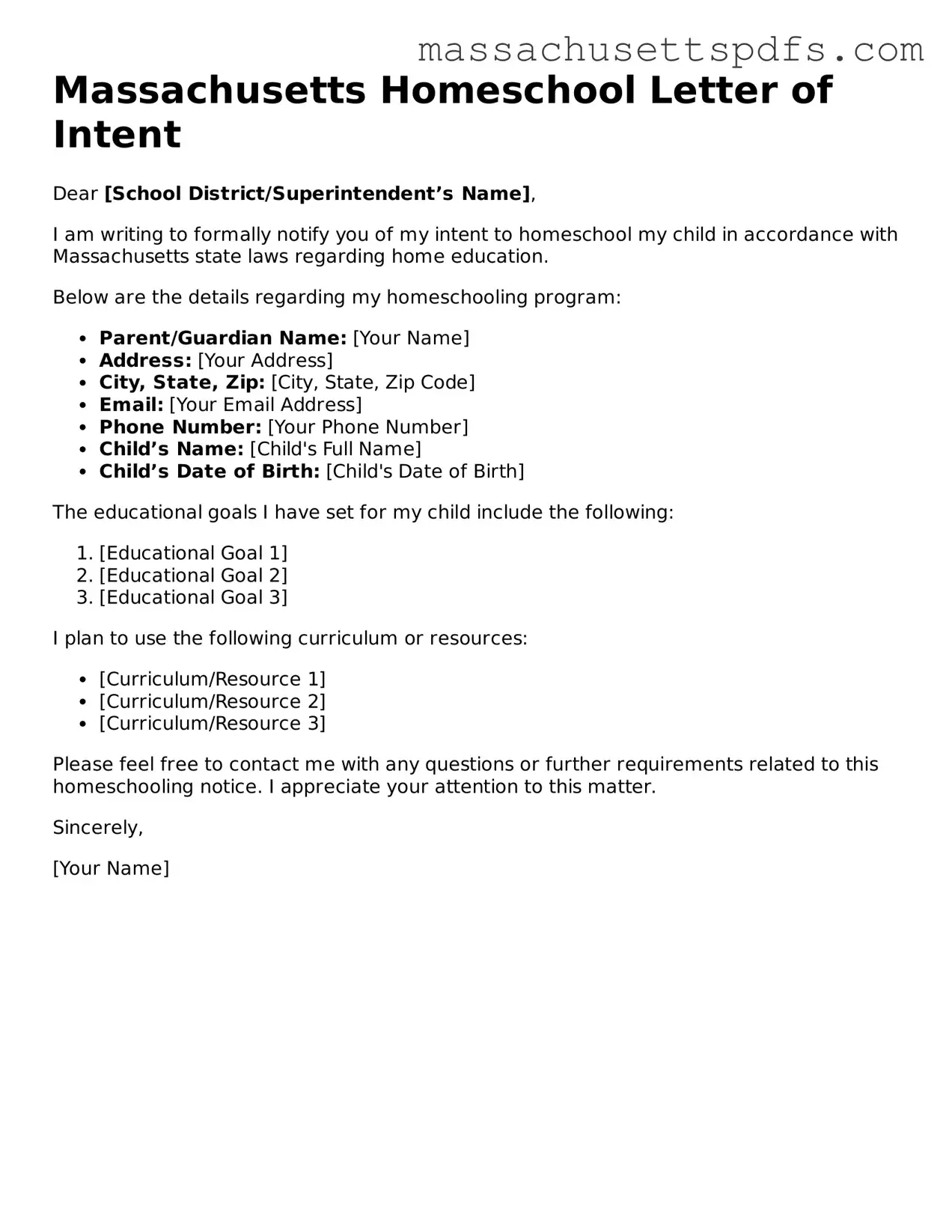Attorney-Approved Massachusetts Homeschool Letter of Intent Document
The Massachusetts Homeschool Letter of Intent is a formal document that parents must submit to their local school district when they choose to educate their children at home. This letter serves as a notification of the family's intent to homeschool and outlines the educational plan for the upcoming year. Completing this form is an essential step in ensuring compliance with state regulations, so be sure to fill it out by clicking the button below.
Launch Editor Here
